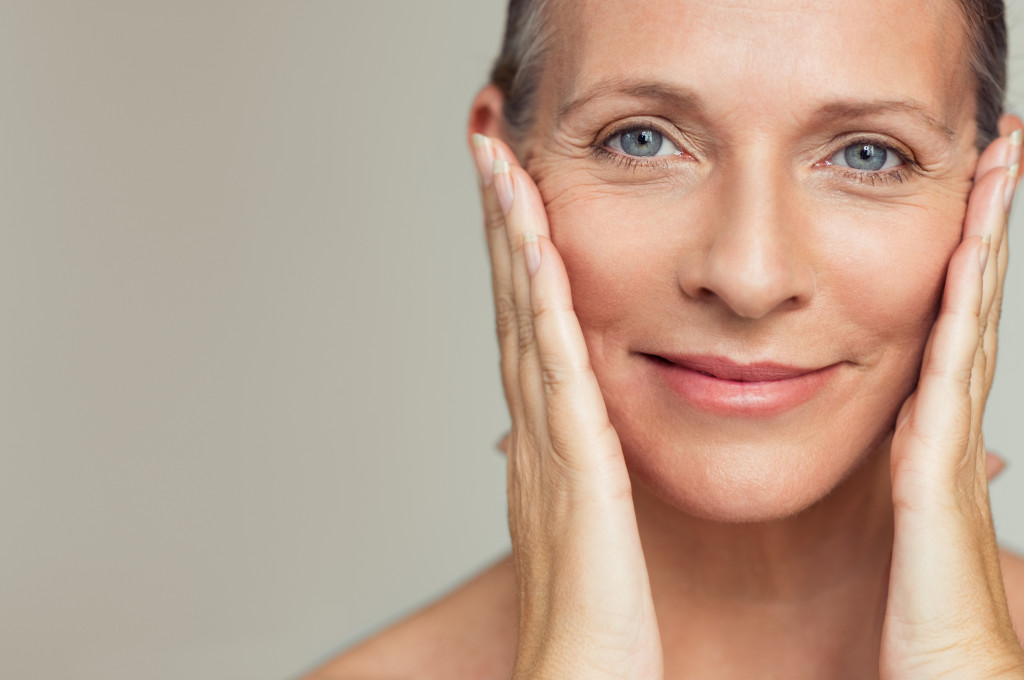- The breakdown of collagen, elastin fibers, and gravity causes sagging skin.
- Hydration and nutrition play an essential role in maintaining skin health.
- Eyebrows, cheeks, and neck are prone to sagging due to the weakening of collagen and elastin fibers.
- Quality skincare products, such as moisturizers and serums, can help to keep the skin healthy.
- If preventative measures fail, treatments like a neck lift or facial fillers can help restore volume and shape to the affected areas.
Sagging skin is a common issue that affects the appearance and confidence of many people as they age. It is a natural part of the aging process due to various factors. Knowing the science behind sagging skin can help people understand how to prevent or address it early. This blog explains the science behind sagging skin and provides valuable tips for maintaining healthy skin.
What You Need to Know About Saggy Skin
Saggy skin is one of the most common skin disorders with age. This occurs when collagen and elastin fibers, responsible for keeping the skin firm and tight, break down over time. Here’s a deeper look into saggy skin and how it can affect your body.
Collagen and Elastin

Collagen and elastin are essential proteins in maintaining skin structure and elasticity. Collagen is responsible for providing skin its strength, while elastin provides elasticity. As you age, the body produces less collagen and elastin, making your skin thinner and more prone to sagging.
This natural phenomenon is unavoidable, but lifestyle factors such as smoking, sun damage, and poor diet can accelerate collagen and elastin breakdown.
Gravity
Gravity is another major contributor to sagging skin. The skin also loses its elasticity making it more likely to droop downward. This is evident in the cheeks, neck, and eyelids. Gravity is also why body parts like breasts and buttocks lose volume and shape. Unfortunately, not much can be done to prevent gravity from acting on your skin. However, facial exercises can help lift and tone the muscles underneath the skin, improving sagging around the face and neck.
Hydration and Nutrition
The role of hydration and nutrition in skin health cannot be overstated. Drinking plenty of water and eating a healthy diet rich in antioxidants and vitamins can help keep your skin healthy and youthful.
Dehydration can cause the skin to dry out and appear dull and lifeless, exacerbating sagging. A diet rich in fresh fruits and vegetables, lean protein, and healthy fats can provide the nutrients our skin needs to maintain its structure and prevent sagging. Additionally, moderate alcohol consumption can help keep the skin healthy by reducing the risk of oxidative stress and inflammation risk.
How It Can Affect Various Parts of Your Body
Saggy skin can affect various parts of your body. Here’s what you need to know about that.
Eyebrow
As you age, your eyebrow can lose shape and form. This occurs due to the weakening of collagen and elastin fibers around the eyes, as well as gravity causing the skin in your brows to droop downward. Thankfully, various treatments can help deal with this. One of the best options is getting an affordable eyebrow lift. The treatment utilizes a special enzyme that stimulates collagen and elastin production to help lift the brows.
Cheeks

As you age, your cheeks may start to sag due to collagen and elastin fibers weakening. The drooping can also be caused by gravity, causing the muscles underneath the skin to sink downward. Facial fillers or a facelift can help restore volume to your cheeks and lift the underlying muscles.
Neck
The neck is particularly prone to sagging due to collagen and elastin breakdown and gravity pulling downward. The most effective treatment for sagging skin on the neck is a neck lift, which removes excess skin and tightens the underlying muscles.
Sagging skin is a common issue affecting many people as they age and can affect various body parts, from the brows to the neck. Understanding the science behind sagging skin can help you understand how to take preventative measures or address it early on.
Using a daily moisturizer that contains ingredients such as hyaluronic acid can help to hydrate the skin and reduce the appearance of sagging. A good toner can help to improve skin texture and firmness, while a serum that contains antioxidants can help improve skin brightness. Eating healthy and staying hydrated, using quality skincare products, and avoiding sun damage are all important factors in maintaining healthy skin. If preventative measures fail, treatments like a neck lift or facial fillers can help restore volume and shape to the affected areas.





